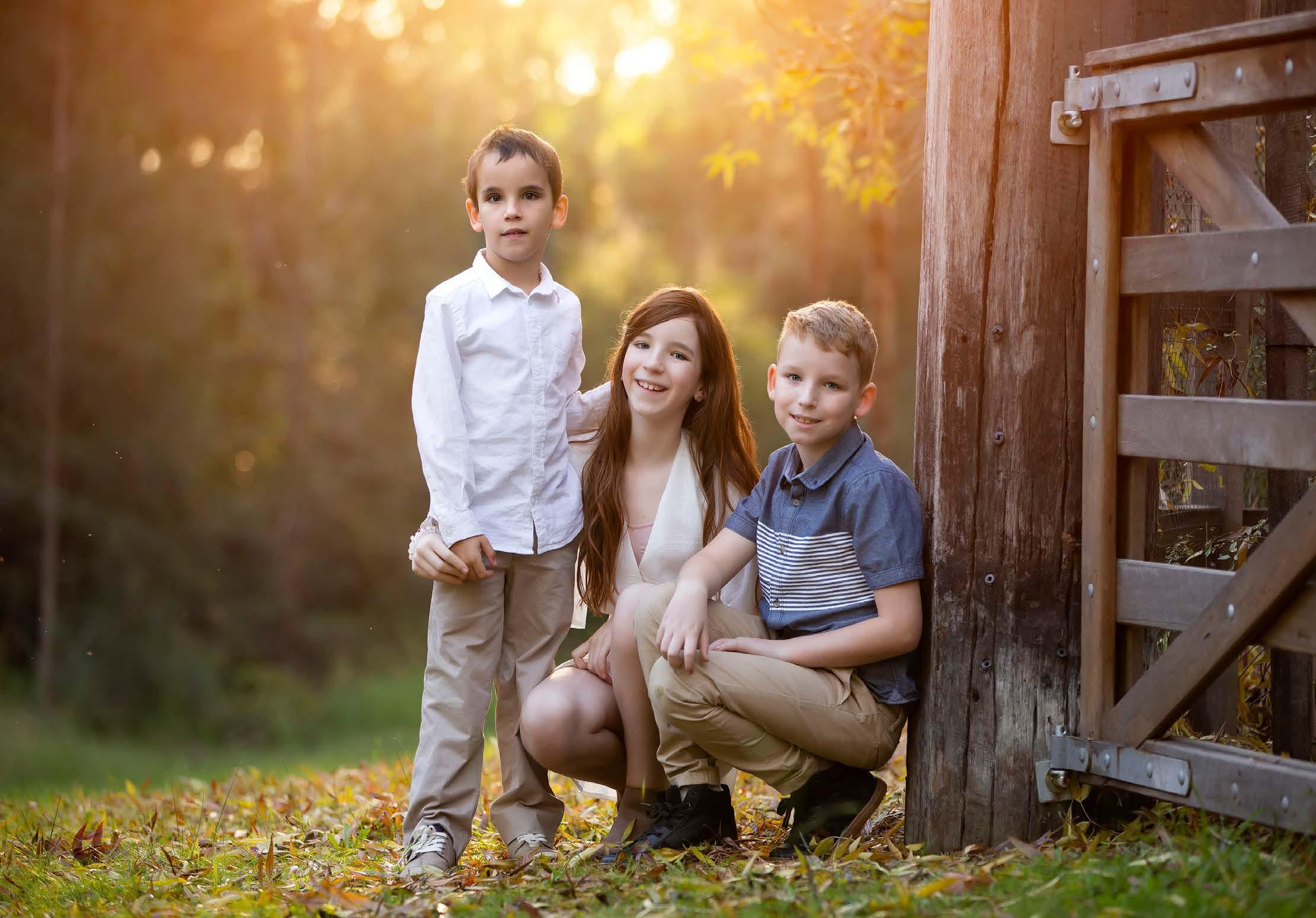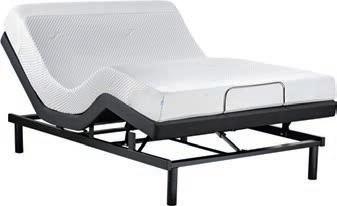STAY HEALTHY AND love your veggies
CHILD SAFETY, more than child locks and car seats



STAY HEALTHY AND love your veggies
CHILD SAFETY, more than child locks and car seats


As we enter the season of falling leaves and cooler nights, I find myself embracing the change, especially in my present circumstance. Sitting here at 34 weeks pregnant with our third and final little bundle of joy, I can’t help but appreciate the colder weather, which offers a respite from the heat and adds a touch of comfort to this precious time.
Pregnancy is a journey like no other – a journey that fills me with wonder and gratitude. The sheer magic of growing another life inside our body leaves me in complete awe. The female form, in all its splendor, is truly magnificent. Even as I embark on this incredible ride for the third time, I am still amazed by the meticulous planning of Mother Nature and how every stage of pregnancy seamlessly leads into the next, preparing us for the miracle of childbirth.
I want to take a moment to honor and acknowledge all the incredible women out there. Whether you have experienced the joy of growing, carrying, birthing, or even enduring the loss of a little human, I urge you to rejoice in the sheer glory of what your body is capable of. Our bodies are vessels of creation and strength, and they deserve to be celebrated for their innate beauty and power.
In a world where women are often scrutinized for their physical appearance, let’s celebrate our bodies purely for what they are: absolutely glorious. The ability to bring life into this world is an extraordinary gift that deserves our utmost appreciation and admiration.
Sending love and gratitude to you, Coasties xxx
Art Director/Editor
Tanzie Carpenter tanzie@onthecoastpublications.com.au
Production
Luke Carpenter luke@onthecoastpublications.com.au
Publisher
Tanzie Carpenter / 0414 611 851
Luke Carpenter / 0405 449 339
trading as On the Coast Publications

ABN 52 212 212 482 PO Box 3251, Bateau Bay NSW 2261
For advertising enquiries advertising@onthecoastpublications.com.au
For article contribution enquiries tanzie@onthecoastpublications.com.au
Cover image
The Natural Photography Co thenaturalphotographyco.com.au @thenatural_photographyco Imagery ingimage.com and freepik.com
Contributors
Carin Clegg, Dr Nicholas Altuneg, Sam and Jordi Woods, Laura Hurstfield, Jessica Sanford, Zoe Papadatos, Alita Blanchard, Alexandra Wilson, Louise Hurley, Savanna Bull, Diana Arundell and Sarah Tolmie.
onthecoastpublications.com.au
4 Coffee with a Coastie –Dr Ash Bowden
Warranty & Indemnity
Advertisers and/or advertising agencies upon and by lodging material with the Publisher for publication or authorising or approving of the publication of any material INDEMNIFY the Publisher, its servants and agents against all liability claims or proceedings whatsoever arising from the publication and without limiting the generality of the fore–going to indemnify each of them in relation to defamation, slander of title, breach of copyright, infringement of trademarks or names of publication titles, unfair competition or trade practices, royalties or violation of rights or privacy AND WARRANT that the material compiles with all relevant laws and regulations and that its publication will not give rise to any rights against or liabilities in the Publisher, its servants or agents and in particular that nothing therein is capable of being misleading or deceptive or otherwise in breach of Part V of the Trade Practices Act 1974. The views expressed in On the Coast –Families are not necessarily those of the editor or publishing staff. While every effort has been made to insure accuracy of the information in this publication, no responsibility will be accepted by On the Coast – Families. No part of this publication may be reproduced without permission of the publisher.
6 Stay healthy and love your veggies
8 Why school vision screenings aren’t enough for Aussie kids
10 Winter We ekend Wardrobing
12 Child safety, more than child locks and car seats
14 The Reading Corner
16 The imp ortance of a nourished postpartum through a traditional lens
18 How to b e more emotionally safe for your child
22 How to b e a good listener
23 What does it mean to set a healthy example to your children?
24 Is a Parenting Plan essential?
26 Nutrition and digestion after gallbladder removal
30 Matters of life & love
Welcome to Coffee with a Coastie. I had the pleasure of sitting down with Dr Ash Bowden aka Doctor Do More, as many know him. Originating from the UK, Ash is an Emergency Doctor on the Coast, and has become somewhat of a local celebrity known as Doctor Do More, promoting movement and exercise on the Central Coast. Ash is also a passionate and caring human that just simply wants to do good, and I was grateful to be able to sit down and chat with him.
You moved to the Central Coast from the UK in early 2019. When coming to Australia, what made you choose the Central Coast to live?
I think it was out of my hands, to be honest. I wanted to come to Australia and in terms of the places that I knew, it was Sydney, Melbourne, and Cairns, that was as far as my knowledge went. I had applied for jobs out here through a recruiting agency, and they kept offering me places that I’d never heard of, and I kept on saying no. I mentioned, I kind of fancy something on the coast. Then eventually they said, what about Gosford and Wyong Hospitals? This place called the Central Coast. I Googled it and went, wow, that looks alright, and I’ve come out and I just feel so lucky. It’s such a nice place to live.
When did you come up with the identity Doctor Do More and what was the driving force behind it?
I was back in the UK working in intensive care with a professor who specialized in exercise testing. She did loads of research around exercise and its impact on health, specifically on cancer and why exercise is so important in improving a patient’s likelihood of leaving the hospital. I was in awe of her knowledge and how impactful exercise was. I felt really stupid that I was a doctor and I’d been working two and a half years at that point and didn’t realize how important exercise was. So, working with her in intensive care, was a real light bulb moment. It’s not about being an athlete, it’s just about doing more. So, when trying to find a social media handle. I thought, I’m a doctor, Doctor Do More sounds cool and it sort of just rolled on from there.
What was your life like as Ash before becoming Doctor Do More?
Yeah, that’s a great question because I barely think about that anymore. I love every part of my life now and what I do. Back in the UK I had times where I was quite low and quite anxious, and I struggled with my mental health and with that came depression at times as well. It was only when I broke up with a girlfriend when I was in Southampton that I turned to fill the gap with exercise and thought I’ll talk to a personal trainer, I’ll get a program, I’ll actually really lean into this. I had a program that was five sessions a week and pretty intense. I remember struggling to walk at work because my legs were so sore after the
Monday session, but I was just so much happier. I couldn’t believe how much happier I was, and all my colleagues picked up on it. I was in such a better head space, and it made me realise how important exercise was for my mental health. Now out here in Australia, I’ve just leaned into it even more and spreading the message that it’s not just about your physical health, but your mental health too.
You posted a before and after image on Instagram, that said ‘look at how I’ve changed in 12 weeks. But there was a third picture of you much younger. What advice would you give to you if you could speak to your younger self? It would all be about mental health. It would be worry less and love yourself more, stop thinking about and worrying about what other people are thinking of you. I was so self–conscious, everything I did was because I wanted to have other people like me. But as we get older, we realize that life isn’t about making other people happy. It’s about being happy yourself and funnily enough, when you are happier, everyone else tends be happier around you.
You are very active within the community, and one of your projects is the #MoveAgainstCancer Step Challenge, which raises money for the Cancer Council. Can you talk about this and when the next step challenge will be? This is one of my favourite initiatives. #MoveAgainstCancer is a Step C hallenge where people can register and then use any device to track their steps. Whether it’s a smart watch or a pedometer. The

goal of the challenge is for everyone to gain an awareness of how many steps they’re taking on an average day throughout the month of September. I’m a bit wary of the word challenge though, because a lot of people then think I’ve got to do a certain amount of steps, and it’s got to be really intense. When actually the biggest value for everyone comes from just getting involved. I started it in 2020 when I was fundraising for the Cancer Council when I did Stars of the Central Coast. That year it raised $13,000 and I was using a makeshift website, where I had to send everyone my bank details, there were 600 people and I had all of their emails. I had to register them all, it was the most labour intensive thing I’d ever done. So, the next year I spoke to the Cancer Council and said, this was really cool, loads of people got involved, we raised a good amount of money, can we do it again? It was during restrictions and I was down in Cooma at the time, but I still wanted to run the challenge. So they had a website set up that we could use, which took a lot of the admin off my hands, and that year 800 people got involved and a hundred thousand dollars was raised, which blew my mind. Then last year I ran it again and I think we raised $52,000. It’s not about being an athlete, a marathon runner or a cross fitter, it’s just about walking more steps if you can. I’m really passionate about
this project and this year, I’ve put a lot of money into the website development myself, to try to make it even bigger. So come August, I’m going to start promoting it and try and get even more people involved. It will run from the 1st of September to the 30th of September. We give prizes out, we name the top fundraisers and the biggest teams. It’s lots of fun.
Your other project is your Do More Movement Directory at do-more.live. It showcases the wealth of physical activity available within our community on the Central Coast. Can you talk about how this works?
So this idea came about when I was back in the UK. After having my light bulb moment that people needed to move more. I wrote out a questionnaire, made roughly 500 copies and started handing them out everywhere. This was when I was back in the UK working at Southampton General Hospital. I was fascinated to hear what motivated people to move, what they perceived as their barriers, what things they like doing and that sort of thing. When I got the questionnaires back, there were obvious trends. Time was a massive barrier, but then people would also say things like, I’m a shift worker and I can’t find the
classes that suit me, or they’d have other really specific barriers. So, with that I thought we’ve got things like Menulog for when you want to search for what takeaway you fancy. So I had this idea of creating a directory for movement and exercise, and then when I got out to Australia, I started looking into website development and started asking friends that were active and ran gyms if they’d sign up to it. I think I got about 120 businesses registered and it started to take shape. I thought this can really add value if this existed and every physical activity provider was on the website. You could then go to the website and put in the things that suit you, times that suit you, whether you perceive yourself as a beginner, intermediate or advanced. The different types of exercise you like, whether it’s weightlifting or outdoors and then you’ll see everything that’s available on the Central Coast, encouraging you to be more active.
We look forward to seeing more of Dr Ash Bowden aka Doctor Do More around the Coast. If you would like to find out more about what Doctor Do More is up to, check to out the Do More movement directory at do-more.live or simply search Doctor Do More.


So be sure to scan the QR code or go to coffeewithacoastie.com.au to hear the full conversation where we talk to Ash about:
• The impact of #HelloMyNameIs name badges for Healthcare Staff
• The positive impact seeing a psychologist has had
• Our past thoughts and the impact they can have on us
• The effects of exercise on mental health
• Helping deliver babies and patients die comfortably
• Your exercise tolerance and its effect on your recovery
• If Ash had children of his own, the advice he would give them

So much passion in all he does! Luke with ‘Doctor Do More’ Ash Bowden
I couldn’t believe how much happier I was, and all my colleagues picked up on it. I was in such a better head space, and it made me realise how important exercise was for my mental health
It’s not about being an athlete, it’s just about doing more
In the cooler months people are always talking about warding off the cold and flu with garlic and vitamin C supplements, however eating enough fruit and vegetables can often be overlooked and can be one of the most beneficial things you can do to keep healthy as well as reduce the severity and duration of illness.
Veggies provide a huge range of nutrients, like vitamin A, B group vitamins and vitamin C which we all know is important for good immune health. They provide antioxidants to keep inflammation at bay, and various minerals depending on the type of vegetable. Vegetables contain different fibres, important for good gut flora,

which further strengthen our immune system and keeps us feeling happy and regular.
Vegetables are such an integral part of a balanced diet, however, most Australian’s struggle to get their 5 a day (or two and a half cups).
Some reasons why this is the case are:
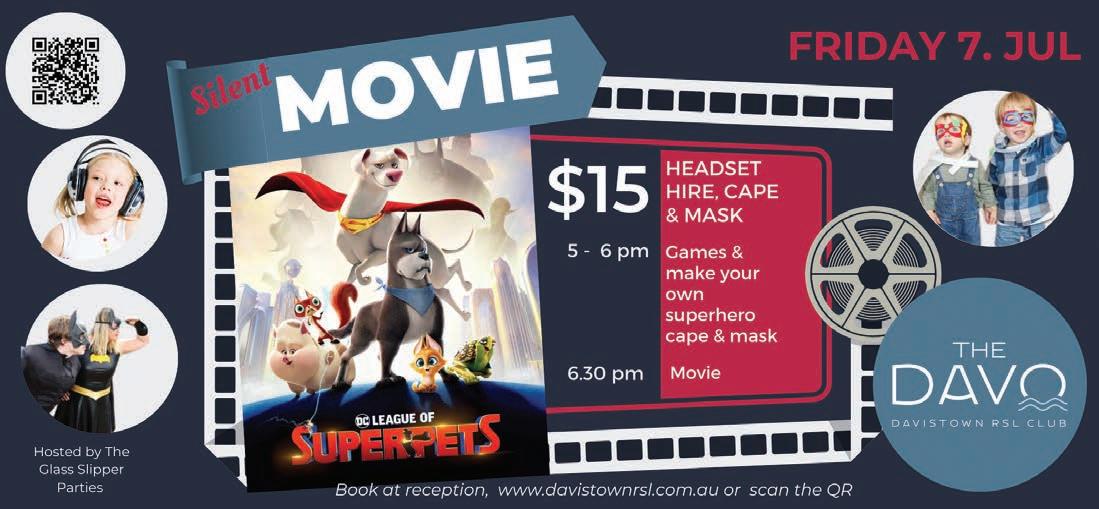
Learning to eat vegetables as a child is actually quite difficult
Learning to eat new foods is not as simple as just putting it in your mouth. It can take over 14 exposures to learn to like a new food. So just keep offering and asking your kids to have a taste without pressure to eat it, knowing they will learn to like it in their own time
When learning to eat a range of foods, a new food to a child is something that looks different and that is a different texture to another food. For example,
a carrot that is raw in sticks seems like a different food to a child when it is raw and grated as well as when it is steamed or stir fried in different shapes as all these different variations are a different eating experiences
Vegetables are one of the most difficult food textures to eat as the tough fibres need good jaw strength to grind them down into small pieces to eat. After the age of 3 is when many kids physically have this good jaw strength helping them eat their vegetables better, that is when they are not tired at the end of a hard day of play or school.
We have lost our connection and positive relationship with fresh foods, particularly vegetables, as a society. There was a time where we all used to grow our own food or at least some of it, so we have lost a lot of food knowledge, love, care, and also control over what is
in our food. Today we can make a whole meal without even touching a vegetable; just open up a packet and whack it in.

Instead of focussing on whether it is low carb or the amount of kilojoules in our food, we need to focus on learning about where our food comes from, who grows it, how does it grow, what does the plant look like from a seedling and how do you know when to harvest, prepare, cook and preserve a bumper crop. That way we will place a higher value on it than something that came in a plastic package that does not even resemble a whole food.
So how do we learn to value, love and appreciate our vegetables? Here are some ways to build that connection with your veggies.
Go to your local green grocer or farmer’s market and hand pick your fresh produce. Feel the texture and smell all the wonderful aromas and really connect with your food
Visit a local farm, pick up some
produce off the side of the road, do a tours or pick your own session. With the Harvest Festival coming up there are plenty of opportunities to get to know your food and local farmers
Start gardening to increase your availability of vegetables. It also reduces the cost as well as wastage. Easy to grow vegetables are shallots, leek, lettuce, silverbeet, spinach, beetroot, beans including snow peas and sugar snap peas, capsicum, rocket and radishes.
Get involved in your local community
Check out your local community Garden for some inspiration
Visit a produce swap. They run once a month at Long Jetty, Matcham Holgate, Woy Woy and
SWAMP (Wyong). Swapping items can include seeds, plants or cuttings, home–made preserves, empty jars, egg cartons, baskets, coffee grounds from a local café and gardening tools

Join Permaculture Central Coast, a volunteer–run community group. They meet monthly at various community gardens With guest speaker talks including raffle prizes, a swap table, seed bank, farm and garden tours, permablitzes and the Central Coast Edible Garden Trail, these will help and inspire you to learn how to grow your own food.
So learn to love your rainbow of veggies and fight off those colds and flus this winter!
eating enough fruit and vegetables can often be overlooked and can be one of the most beneficial things you can do to keep healthy as well as reduce the severity and duration of illness
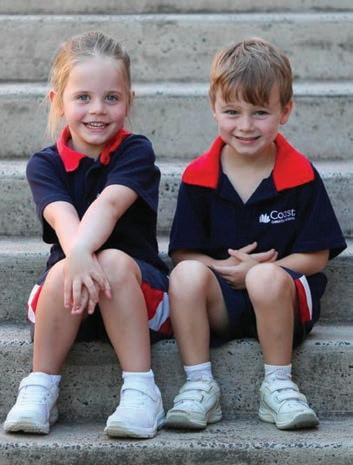 BY DR NICHOLAS ALTUNEG
BY DR NICHOLAS ALTUNEG
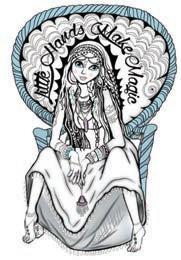

Many preschools and schools across Australia offer vision screenings for children to ensure students are healthy and ready to learn. These screenings typically involve a brief assessment of a child’s visual acuity, or ability to see clearly at a distance, using an eye chart. While vision screenings can be a valuable tool for identifying potential vision problems, they do have limitations and only catch about 10% of vision issues.

a regular basis.
While vision screenings are quick and convenient, they are less thorough than comprehensive eye exams. Most of the time, a vision screening only checks a child’s visual acuity, or how well they can see from a distance. But many other parts of vision are important for children’s development and academic success, such as focusing, eye teaming, eye tracking, and depth perception. These skills are not assessed during a typical vision screening.
In addition, vision screenings may miss certain types of vision problems, such as astigmatism or colour blindness. Some children may also have “hidden” vision problems, where they have difficulty with visual skills but can still pass a visual acuity test. These problems will not be found during a vision screening, making learning, reading, and doing other school work difficult.
Comprehensive eye exams are more thorough than vision screenings and can find a wider range of vision problems. During a comprehensive eye exam, an Optometrist or Ophthalmologist will check a child’s visual acuity and other parts of their vision, like how well their eyes work together, follow each other, and focus on things. The exam may also include tests to check for conditions like amblyopia (lazy eye), strabismus (eye turn), and other visually related issues that can impact a child’s vision and academic performance.
Comprehensive eye exams are particularly important for Australian children with a family history of vision problems or who have shown signs of vision issues, such as sitting too close to the TV or holding books very close. Children with a previous eye injury or who wear glasses or contact lenses should also have regular, comprehensive eye exams.
How often should Australian children have eye exams?
The Optometry Board of Australia advises that children receive their first thorough eye exam at 6 months of age and a second exam at age 3. Children ages 5 to 18 should have a comprehensive eye exam every 1 to 2 years, depending on their specific needs and risk factors for vision problems.
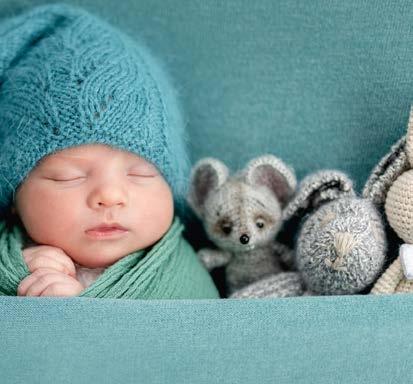
Parents should also know the signs that their child may have vision problems, such as squinting, rubbing their eyes often, or complaining of headaches or eye fatigue. Parents should make an Optometrist appointment if these symptoms happen as soon as possible.
Observing a child’s visual behaviour and their ability to track, focus, and process visual information can provide valuable information about their vision. These aspects should be considered when examining children’s vision, as they can help identify potential vision problems that may not be detected during a standard vision test.
Any O ptometrist can assess visual acuity and the health of the eyes in children. Some O ptometrists, known as Behavioural Optometrists, undertake additional training in assessing children’s vision. A Behavioural Optometrist can diagnose and treat a wider range of children’s vision problems than the typical Optometrist.
An examination with a Behavioural Optometrist will take longer, but they will look at more aspects of a child’s vision. According to the Australasian College of Behavioural Optometrists, a Behavioural Optometrist:

explores how someone’s eyes work in the distance but also how they work when reading or using various forms of technology
ensures that the focus, movements and teaming of the eyes are working efficiently and have the stamina for everything that they want them to do
assesses vision processing skills
ensures vision development in children is progressing as it should and is not impacting their ability to learn
assesses and manages vision issues of children and adults with learning difficulties such as dyslexia, ADD, ADHD, Autism Spectrum Disorders, Parkinson’s and those who have had a stroke or head injury
understands the health of the eye and how your body impacts your eyes.
What is the best option for your child?
Even though vision screenings in Australian schools can help find possible vision problems, they are less thorough than full eye exams. Comprehensive eye exams can identify a wider range of vision issues and are particularly important for Australian children with a family history of vision problems or who have shown signs of vision issues. Parents should ensure their children have regular, comprehensive eye exams as part of
Dr Nicholas Altuneg is a Behavioural Optometrist who has been working on the Central Coast for almost 30 years. He is the co–founder at Eyes by Design, which is in the Kincumber Centre. Appointments can be made by phone 4369 8169 or online at www.eyesbydesign.com.au


their healthcare routine. By doing so, they can help ensure that their children can learn and thrive both in and out of the classroom. A Behavioural Optometrist should be consulted for more detailed assessments.
This article is intended to promote understanding of and knowledge about general eye health topics. It should not be used as a substitute for professional advice, diagnosis, or treatment. Always seek the advice of your health care professional prior to incorporating this as part of your health regimen.
During a comprehensive eye exam, an Optometrist or Ophthalmologist will check a child’s visual acuity and other parts of their vision, like how well their eyes work together, follow each other, and focus on things
Coastal weekend dressing often means jeans and a knit jumper for many people, due to the warmth, comfort and casual ease. However, what about those days when you want to step up your style, still look “coastal appropriate” and not too OTT (over the top).
Many clients voice the concerns of wanting to dress up but feeling too over the top for the coastal lifestyle many of us live. Below we have shared with you a few things to try to step up your Winter weekend wardrobe, ensuring you look appropriate yet stylish!
Why not try –
Layering a long sleeve top under a pair of overalls

Switching out a plain cardigan for a patterned one
A poncho or vest for added layers and interest
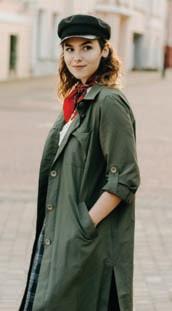

“Casual Chic” with denim jeans and boyfriend blazer over a lace top

Adding accessories such as a neckerchief (aka neck tie), funky cap, festival hat, fedora or beret for added interest and a pop of colour injected into your outfit
Denim jeans with patchwork or metallic finishes
Switching out a sneaker for a man style loafer or cowboy boot
Light layers, so you can undress as the day warms up i.e tee, thin knit cardigan, trench coat

A long sleeve dress or layering a top under a pinafore dress.
Remember, as Sam always says ”you can never be over dressed, only inappropriately dressed”.
This Winter, #DressUpItFeelsGood, wear things that depict your style, are appropriate for the situation and make you feel confident, comfortable and cozy.
You only live once, why not make it a stylish life!
Vibrantly yours, Sam & Jordi Woods xx
Understanding styling and fashion is one thing. Having a super natural flair for making everyday people look incredible is another. Once you’ve met Sam and Jordi Woods, it’s hard not to catch their infectious passion for dressing to match your own lifestyle, personality and charisma. Through their consultancy ‘Vibrant Concepts’, Sam and Jordi have transformed the lives of thousands. Let Sam and Jordi show you how to look and feel fabulous everyday at their Style Studio in Erina – learn the art of illusion dressing, colour matching, styling, translating fashion trends and savvy shopping with their unique VC Signature Styling Systems and services that are truly personal and really work! To contact Vibrant Concepts phone 0425 221 676
FAMILY FUN AT ERINA ICE ARENA THIS JULY SCHOOL HOLIDAYS.



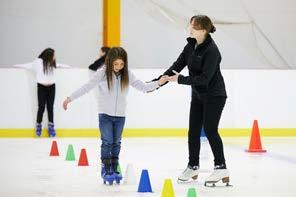




Public skating session each day Monday to Friday from 11.30am-3pm.
Tickets are $19 per child, and $23 per adult, Family tickets are $74.
Disco sessions every Friday and Saturday night from 7.30pm-10.00pm - $17 per session
SCHOOL HOLIDAY CAMP
Create cool memories this school holidays with a fun and exciting ice skating adventure.
Classes run from 9.30am to 11am Monday to Friday. Suitable for children aged 3-15 years.


3-6 year olds will be excited to enter the playgroup class full of fun activities - $16 per session.
Children aged 7-15 will participate in progressive classes to challenge themselves and build on their skills - $32 per session.
Bookings are essential and can be made on the ‘book now’ tab on our website.
We have Ice Hockey games running both Saturday and Sunday throughout the school holidays. The Central Coast Rhinos continue their 2023 season in the AIHL plus returning in 2023 is the Australian International Ice Hockey Cup. All games commence at 3.30pm. Entry to the rink from 3.00pm.
www.erinaicearena.com.au/ticketed-games/
As new parents you know to buy the socket covers, the cupboard locks, have the car seat professionally fitted. When they get older you make sure they have their helmet on when on their bikes or scooters and wear their floatie in the water. Walking to school you teach them how to cross the road safely. These are all things you just do as parents, it’s like second nature, then why is it not the same with personal safety for children? Why do many parents find it difficult, confronting or just avoid having the conversation with their children?
Yes schools have personal safety in their curriculum, but you really want them to be able to identify an unsafe situation and have strategies in place before they head off to school. You also want to them to hear it from you, with your values and opinions and have your voice in their head if they are ever in a difficult situation.
You can’t be with them 24/7 but you can educate them about what to do if something doesn’t feel right and that it is safe to talk to a trusted adult. Giving them simple strategies about keeping safe can help build confidence, resilience and empower them. It might be scary to start the conversation but it’s so important to take the first step and then make it an ongoing dialogue which evolves as they develop.
According to Bravehearts.org.au the not–for–profit organisation dedicated to prevention and treatment of child abuse, the benefits of personal safety education can:
Reduce the likelihood of a child entering an unsafe situation
Clearly demonstrate to the child how to respond to an unsafe situation
Increase a child’s sense of confidence and in doing so increase their resilience
Increase a child’s knowledge of their personal rights i.e. “I have a right to
feel safe with people”
Increases the likelihood that the child will speak out if they feel unsafe and tell someone they trust
Can interrupt or prevent grooming.
SO HOW DO YOU DO THIS?
Teach your children the following three rules:
We all have the right to feel safe with people.
Talk about people you feel safe with, ask them who they feel safe with. Talk about if something or someone makes them feel uncomfortable they should tell someone. I often use the term “Icky feeling” in my programmes, often this presents as a funny feeling in their tummy and sometimes it can be upset tummy, but sometimes it can be that something else is bothering them, listen to them in those moments. Tell them it’s OK to tell you if they don’t feel safe with something or someone or in a situation, trust their instincts. Tell them this can be in any situation at a party, at school, at the skate park etc.
It is OK to say No if you feel unsafe or unsure.
The rule teaches children it’s OK to say No, to stand up for yourself and be assertive if something doesn’t feel right. It’s important they know they have a voice, and their voice matters and is heard. This includes others hurting or touching them in ways they don’t want them to. It’s a good idea to refer to school or daycare rule of keeping our hands to ourselves and that if someone is touching them or hurting them then they need to tell someone they trust.

Teach them it is their right to say no if someone comes towards them and is too close they can ask them to stand back and give them personal space, using their hands to block someone getting to close is perfectly fine and a great tool for lots of situations. Putting their
hands up and saying “No I don’t want you to touch me” or “No you can’t do that to me” is a great way of standing up for themselves without hurting others or being interpreted as rude and can be used in the playground or the park if another child is getting too close or maybe getting aggressive.
Nothing is so yucky that you can’t tell someone about it. This is so important, often children don’t want to tell you things because they think they will get into trouble, or they don’t want to disappoint us. It is important they understand there is nothing they can’t tell you. “You can tell me anything at all, whatever it is I will always love you” It’s also a good idea to have other trusted adults who your child feels safe with, and you trust and put them on a NETWORK HAND.
You will know if your child is developmentally ready to do their Network Hand. Simply sit with your child and draw around their hand, ask them about some adults they trust or feel safe talking to, this might be Aunts, Uncles, Coaches, Teachers. If you are happy with their choice ask them to draw the face of each person in each finger of their hand outline. Then you add in their mobile or best contact number. This then lives on the fridge or on the child’s wall. You must explain to the people on the Network Hand that they are a trusted adult and may one day get a call. This list may change as your child gets older but it’s a really good way of ensuring they know there is always someone they can talk to if they feel they can’t tell you.
Speaking with your child about personal safety should not be a big one off conversation, this is a dialogue that needs to continue. Use all opportunities to talk about personal safety, these conversations will evolve as they get older. When you are having the conversation, speak calming and confidently, with a natural tone. If they sense you are anxious they may pick up on your anxiety and not process what you are saying. Give them time to process what you say and ask a few times if they have any questions. Keeping the communication going is important and not just around personal safety, having clear open communication with our children is vital for later years too. Make it the norm to have open, two way conversations with your children.
A really good tool for starting these family conversations is something called “Bad Thing, Good Thing”. Maybe at dinner time or bath time, each

person, Mum, Dad, Granny whoever is there, gets to say one bad thing that they did today or one bad thing they witnessed or experienced. When your child says, “I didn’t get picked for the concert” you say, “I’m sorry you didn’t get picked for the concert, you must feel sad about that?” They know you heard them and as time goes on they will feel more comfortable sharing things that have happened or things they are worried about. The bonus is they are also learning emotional language! Then everyone shares one good thing, and you celebrate the wins. This ensures good two way communication and they have learnt it’s safe to tell you things.
As a parent you might cringe at the thought of teaching your children the correct language for their private parts, its often easier to come up with nick names. However, for personal safety, its important they know the proper terms for their private parts, it means there can be no misunderstanding, “Willy” could mean any part of the body really, but we all know a “penis is a penis”, no misunderstanding. Use the proper names to emphasise that these parts are personal and belong to them. And most importantly, never make your child feel ashamed or embarrassed about their bodies, you want them to be confident in their bodies and know how to keep them safe.
If you are uncomfortable having the conversation about private parts and safety, there are lots of books available. A few I use in my programmes are “Everyone’s Got a Bottom by Tess Rowley” and “My underpants rule” by Rod and Kate Power, both available from most good bookshops and may be at your local library.
If the thought of talking about private parts to your child is too confronting and you don’t know where to start, there is a great book called “Where Did I Come From” by Peter Mayle which talks about private parts and where babies come from, with great illustrations which gets the conversation going and takes the pressure off you to come up with the words. With all the above mentioned books, be prepared for questions after they have processed what they have learnt and keep the conversation going. Its better they get answers from you rather than a friend’s older sibling or from the playground. With all these books, hints and tips, you will know if your child will be able to understand these things, because you are the experts in your children!
For more information and resources on child safety visit Bravehearts.org.au or contact hurstfield_consult@bigpond.com
Laura Hurstfield has 20yrs experience as a Social Worker and Parenting Practitioner. Providing Parenting Programs such as Triple P Positive Parenting Program,123 Magic and Emotion Coaching and Circle of Security. In 2013 Laura won the accolade of International Triple P Practitioner. Laura offers 1:1And most importantly, never make your child feel ashamed or embarrassed about their bodies, you want them to be confident in their bodies and know how to keep them safe
Written and Illustrated by Peter Lee – Ages 0–5+

Peter Lee was producing large shows and events when the 2020 lock downs and Covid pandemic hit and he was no longer able to do what he loved. However, the time spent at home reignited his other passion – writing and illustrating.
Inspired by his children and grandchildren, Peter wanted to create a series of picture books that aimed to impart gentle early–life lessons on values and respect. The books include stories about colourful dinosaurs and how they navigate the ups and downs of daily life – making mistakes and making amends. The first character Peter created – Bluey, the theropod dinosaur – was motivated by his then six year old son.
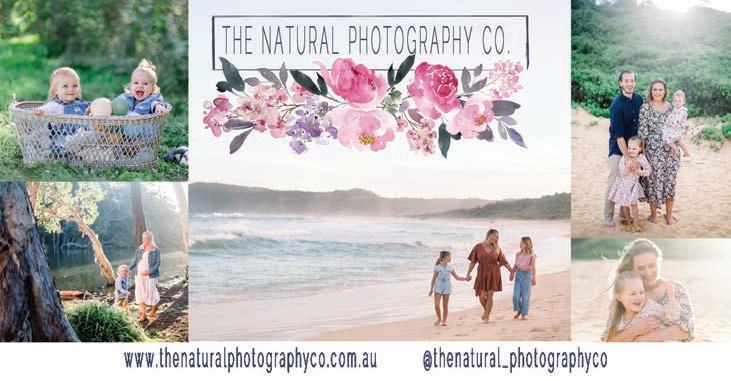

Book One in the value series focuses

on Honesty and Justice. In the first story, Bluey accidentally breaks a special seashell belonging to one of his friends. He has a choice to make – pretend he doesn’t know how it happened or come clean? In the end, telling the truth makes Bluey feel good in his heart and is appreciated by others too. The second story about Justice sees two little dinos taking something that isn’t theirs. The story focuses on how they can take responsibility for their misstep and do the right thing.
“Soft yet positive encouragement regarding actions and behaviour are demonstrated by those around us and we become a result of the quality and effectiveness of such teaching. The values depicted in these five short stories endorse what we as a society have deemed essential
for our moral behaviour, discipline and respect for ourselves and others.”
Also included are colouring pages that can be photocopied and used in class or at home. To follow Book One (Honesty and Justice), Book Two will focus on Determination, Consideration and Love.
To get your copy, email: littledinodudes@gmail.com OR purchase online: facebook.com/Littledinodudes/

Praise for Little Dino Dudes: “I read the first story to my class this afternoon and they really enjoyed it! It was at their level, and they picked up the concept of honesty very easily.”
“The virtues of honesty and courage that underpin the story lines instill in children the importance of these character attributes in our building positive relationships with others and ourselves.”
Jessica Sanford is a writer living on the Central Coast. She has a passion for literature and writes fiction and non–fiction. Jessica was the winner of the Wyong Writers’ 2021 Short Story Competition and has also been longlisted for the Furious Fiction prize. She’s currently working on a novel set in rural NSW. https://jessicasanford.com



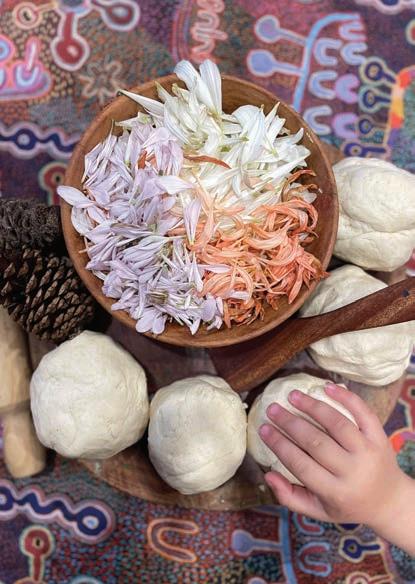


 BY ZOE PAPADATOS, ACUPUNCTURIST AND CHINESE HERBALIST
BY ZOE PAPADATOS, ACUPUNCTURIST AND CHINESE HERBALIST

For thousands of years many cultures have implemented the importance of a nourished postpartum. This normally involves a period of deep rest where the mother is nurtured and held to enable her body the best chance of true healing.
In today’s world, the importance of the 4th trimester has been lost due to the nature of societal stigmas and trends. There is a need and want to be constantly busy to show the world that women can be strong and continue to push on despite the fact they have just given birth. Women are going back to work within 6 weeks post birth, running a household, connecting with and looking after their new baby, all while their body is trying to adjust to this new
physiological norm.
“We have forgotten the time–honoured wisdom that this special cocoon of care should extend to the mother as well – during this time, she can revitalise herself and replenish her reserves, creating a solid foundation from which to tackle the demands of mothering”(1). This not only can impacts a mother during her postpartum period but can influence elements of her life from here on in.
For a moment, take time to reflect on your experience during conception, pregnancy and now into the postpartum period. Are you in utter awe of your power, strength, and ability to adapt to change? Think about every inch of what you have endured. Your body has conceived a child! Your mind and body has given all its power to grow, nourish and support this child from the
beginning. You have birthed your baby and you have adapted to a new life as a mother. Now you have this being to nourish and protect, all while your brain chemistry and
physiology have changed dramatically to support you through this time. Don’t
In today’s world, the importance of the 4th trimester has been lost due to the nature of societal stigmas and trends
“
you think you deserve to be supported and nourished to adapt? Whether you are a new or a seasoned mother, you do deserve to be taken care of in this time after birth.
Through a traditional lens, the postpartum period is known as the ’40 days of confinement’ which is a time after childbirth. Here, your village is meant to protect, nourish, and support the mother “when you take care of the mother, you take care of the child”(1). In addition, by replenishing the mother’s energy in this first month, it builds up a stable foundation for her postpartum period mentally, physically, spiritually and, increases the essence for further reproduction and an easier transition into later stages of a women’s life.
Retreat
Retreat is the stage of confinement after birth that involves the mother staying in a safe space and limiting visitors. This allows space for the bond between the mother and baby to flourish and for you to truly transition into the matrenense. This is a stage of minimal activity and letting the mind rest to be able to process the last 9 months of life.
Rest
Traditional cultures such as Chinese culture, recommend the mother and baby rest to preserve and replenish the body’s life force and energy and truly let the body heal.
From childbirth, the loss of blood and energy decreases the mother metabolic function. To heal and protect, warmth is needed to optimise healing and regain strength. In traditional cultures, cold is also seen as an ‘evil’ and the mother in the postpartum is more susceptive to allow cold to invade as she is in a vulnerable state. Traditional cultures recommend consuming warm foods and keeping your feet, back and abdomen warm.
In traditional cultures, consuming nourishing herbal teas and specific foods are important to bring back energy via a food source. Women have increased nutritional requirements, especially those that are breastfeeding. Warm cooked foods such as soups, stews, congee, bone broths can help with the repair of connective tissue and support healing.
Creating a support network, or ‘your village’ allows all these traditional elements of healing come to fruition. Generally, this will be the role of the mother and/or fathers family or the
partner to help with nourishing the mother, but in the circumstances where this is unavailable, people who do this professionally such as postpartum doula’s, can be of assistance to provide the mother with the support needed to flourish.
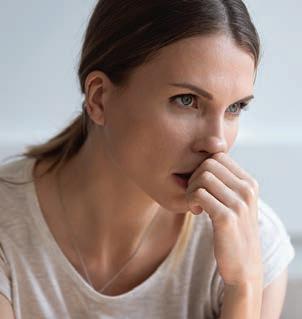
These recommended guidelines to your postpartum are an essential paradigm to your healing. There are many support systems to further educate you on this period and a range of wonderful books. If you need support during this time, please reach out. The postpartum doesn’t just end within the first 6 weeks post birth, it can last a lifetime.
Wednesday 7th June – Commencing at 1.00pm
• Overview on vicarious trauma, burnout and compassion fatigue
• Recognise the early warning signs and risk factors
• Learn practical strategies to build your emotional resilience and coping skills
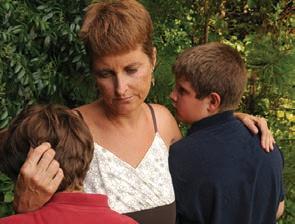
Wednesday 16th August – Commencing at 5.00pm
Complimentary refreshments provided
• Learn practical tools and strategies to support children in developing the emotional literacy and self-regulation skills necessary to understand and manage their big emotions.
SEMINARS HELD AT: Hillside Chapel, Palmdale Lawn Cemetery & Memorial Park, 57 Palmdale Rd, Palmdale
To book your seat, please call 1300 130 955
Here, your village is meant to protect, nourish, and support the mother “when you take care of the mother, you take care of the child”
 BY ALITA
BY ALITA
Children need to feel emotionally safe, seen and soothed to feel secure. It seems obvious that this is what we want to provide for our children but it can get tricky when our children cry, tantrum, hit, scream, whinge, meltdown or become aggressive.
BUILD YOUR ABILITY TO REGULATE YOUR EMOTIONS
When you are more regulated in your nervous system, you have more capacity to be present with your children to help them feel safe, connected and be able to co–regulate with them. Especially when their behaviours are intense or tricky.
You will likely need daily nervous system care practices that help you to ground, soften, be present and to build pathways in your brain so you can access your own regulation. This often starts with education first.
SOME FOUNDATIONS OF BUILDING NERVOUS SYSTEM REGULATION
Awareness and information –child development, brain, feelings, needs, triggers
Education on the nervous system
Practice the pause daily (mindful awareness)
Listening time to feel heard and seen
Somatic tools – breath, tapping, touch
Sensory calming tools – cold, crunchy, movement, pressure, deep pressure
Co–regulation with other empathic adults – safe friend, therapist, coach
Sharing our truth / vulnerability
Self compassion – “I am good enough!”.
These together can help to bring access to more felt safety!
LOOK AFTER YOURSELF SO YOU CAN LOOK AFTER YOUR CHILDREN – YOU MATTER!
It seems obvious but it’s easy to let our own needs go unmet in motherhood.
Eat good nutritious food and drink lots of water
Move your body – slow and simple is fine, stretch, jump, dance, shake
Make yourself your favourite hot drink – use this a ritual to slow down
Nature time everyday –micro moments.
PRACTICE AWARENESS AND BE CURIOUS
Pay attention to what is happening in your body – notice sensations, name your feelings and express what it is you need
Notice your children’s behaviour and get curious about their possible feelings and unmet needs
Practice active listening with your child. Aim to be fully present with them at least once daily
Build your compassion for your child by being aware of their unmet needs.
BE AWARE OF SENSITIVE NERVOUS SYSTEMS
Children with highly sensitive nervous systems may not thrive with lots of people, lots of activities and too much sugar and adventure. Slow life down.
SNACKS CAN HELP CHILDREN TO REGULATE WHEN YOU DON’T HAVE MUCH CAPACITY
Some days you will feel tapped out, exhausted, overwhelmed, tired, sad or depressed. Sensory calming snacks can help your kids regulate when you aren’t overly present with their feelings.
Examples –
Write down your feelings and needs – “I am feeling....I am needing....”
Ask for help – you must learn to do this
Cold icy drinks
Crunchy snacks
Chewy snacks
Cold snacks.
BLANCHARD, PARENT COACH
Be approachable – when you child says “I want to play” they really mean “I need your connection and safety”
“
Tone and body language can be perceived as a threat and continue dysregulation of a child

Avoid sarcasm
Always repair any ruptures when you have yelled, shamed or used fear /threats

Try not to cross your arms or put hands on your hips when connecting with your child

Be approachable – when you child says “I want to play” they really mean “I need your connection and safety”.
Sing and dance a LOT. BE SILLY AND FUN. YOU ARE ALLOWED TO.
they cry and wail and make messes and throw and hurt the baby. None of it is easy. Most of it makes sense.

Almost all behaviour is a child’s communication of an unmet need
Focus on softening, slowing down, compassion and loving them as they already are. Teach limits through
Every child needs lots of fun, play and silliness.
Play games – chase, tip, hide and seek, run crash, grizzly bears, magic wand
Get involved and play – even 5 to 10 minutes can be a game changer
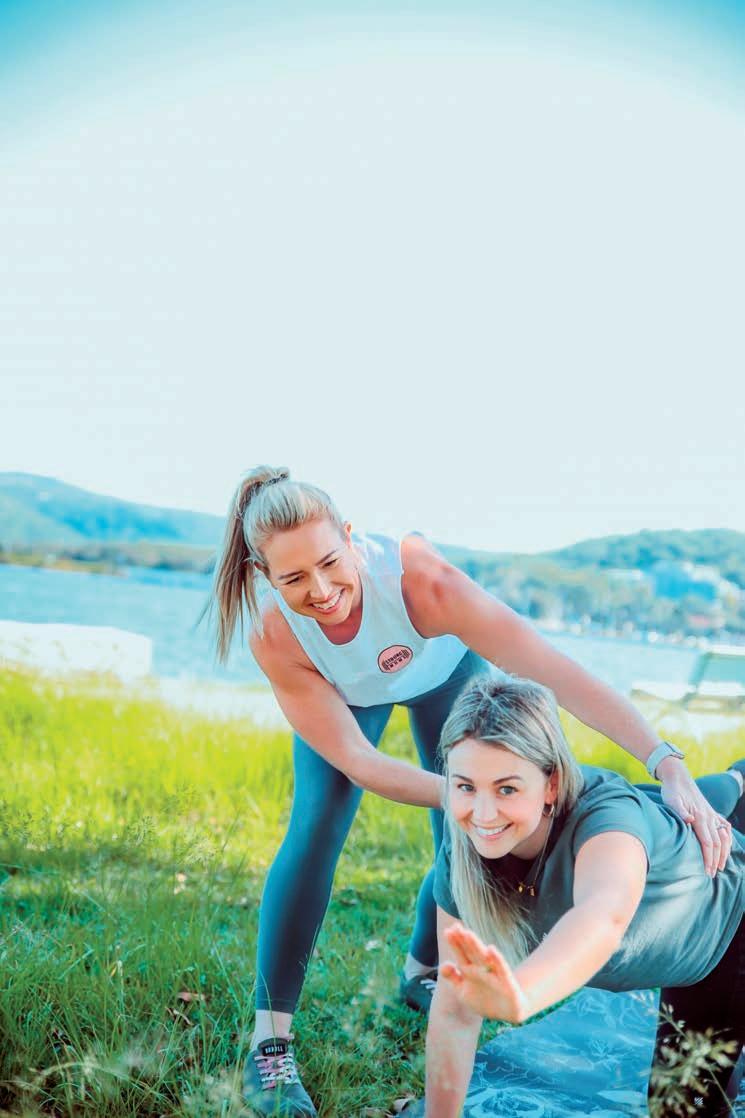
Children with highly sensitive nervous systems may not thrive with lots of people, lots of activities and too much sugar and adventure. Slow life down
a decline in quality of life. Recognising the symptoms, understanding the causes and seeking effective treatment are crucial steps towards regaining ocular health and ensuring the wellbeing of future generations.
The symptoms of Dry Eye Disease

In a world where our eyes are constantly glued to screens, where the environment is changing rapidly, and where the ageing process is inevitable, one silent condition unites all generations of families: Dry Eye Disease. This chronic progressive ailment affects millions of Australians, aged 10 to 100, whereby the eyes do not produce enough tears or the tears evaporate too quickly. It causes pain, discomfort, frustration, and
Dry Eye Disease (DED) presents many symptoms that impact daily life. Sufferers often experience a gritty or burning sensation, sore or tired eyes, redness, excessive tearing, and sensitivity to light. Vision may become blurred, and tasks requiring visual focus, such as reading or driving, may become challenging. These symptoms worsen with time, potentially leading to corneal damage and vision impairment if left untreated.
Children affected by DED will find it difficult to concentrate on their studies and may experience increased eye fatigue, especially if they are spending long hours on screens or engaging in near–focused activities like reading or

writing. Eye fatigue can further impair their ability to stay attentive in class and retain information. This can lead to decreased productivity, difficulty reading or completing assignments, and overall academic performance. Children may have difficulty articulating their symptoms or may not fully understand what they are experiencing.
The chronic progression of Dry Eye Disease
Dry Eye Disease is not a passing discomfort but rather a chronic progressive condition that intensifies over time without proper intervention. As the eyes struggle to produce adequate tears or maintain a healthy tear film, the cornea becomes more vulnerable to external irritants. The condition’s insidious nature underscores the urgency of early detection and treatment to prevent long–term damage.
Several factors contribute to the development of Dry Eye Disease, and


they affect all generations across the family spectrum. Digital screen use, particularly in this technology–driven era, disrupts natural blinking patterns, leading to increased tear evaporation. Age is another crucial factor, as tear production diminishes over time. Menopause, certain medications, rosacea, cataract or laser surgery are also significant causes.
Environmental factors like dry air, pollution, and allergens can exacerbate symptoms, while an unhealthy diet and systemic inflammation will further disrupt the delicate balance of the tear film. 60% of people with allergies will have DED.
For families seeking a safe and effective treatment option, Intense Pulsed Light (IPL) by Lumenis, has emerged as a ground breaking therapy approved by both the TGA (Therapeutic Goods Administration) and FDA (Food and Drug Administration). Lumenis IPL harnesses the power of gentle light pulses to stimulate the Meibomian glands in the eyelids, which produce essential oils for
tear film stability. By improving gland function, IPL offers lasting relief from Dry Eye symptoms and prevents disease progression.
While artificial tears provide temporary relief, prolonged reliance on them can cause corneal surface damage and further exacerbate Dry Eye Disease. Instead of masking the symptoms, it is crucial to address the underlying causes through specialised treatments that target the root of the problem.


To protect the ocular health of all family members, it is essential to consult an expert Dry Eye Optometrist who specialises in IPL treatment. These professionals possess the knowledge and specialised tools to diagnose the condition accurately and prescribe tailored
treatment plans. Early intervention can help alleviate symptoms, prevent long term damage, and improve overall quality of life for anyone suffering with Dry Eye.
Conclusion
Dry Eye Disease silently affects individuals of all ages within families, disrupting their daily lives and potentially causing irreversible damage. Recognising the symptoms and understanding the causes allow us to address this chronic progressive condition effectively. By seeking expert care from a Dry Eye specialist Optometrist and exploring the only FDA & TGA approved treatment for Dry Eye Disease – Lumenis IPL, both children and adults can reclaim healthy eyes and restore the joy of clear vision. It’s important to take action to protect our ocular health and ensure a brighter future for all generations.

Knowing how to be a good listener is a skill many people struggle with. Being a good listener requires practice and an ability to be present to someone else’s experience.
As a therapist, listening is literally my job. I do plenty of talking too, but I can’t say anything helpful if I don’t listen well first!
Good listening can be especially helpful if you’re a parent of a child or teenager. Kids and teens really need to feel heard and understood, and this comes down to being able to listen well to what they are saying, and also what is being implied.
HERE ARE SOME STEPS TO BECOMING A BETTER LISTENER:
Get out of your own head: Focus on what the other person is saying, not what you are thinking. Don’t let your own thoughts distract you
Realise you don’t know how it is for someone else: Even if you have experienced something similar, don’t automatically assume you know how the other person feels. Even if you do understand, keep listening and reflect back that you are hearing them. Say things such as, ‘That sounds really stressful/ difficult’; or ‘Sounds like that’s been really hard’. These reflect back understanding without making it about you.
Consider the following example:
Teen: ‘School sucked today. That stupid kid was picking on me again. He’s such a pain. I hate him so much!’
Parent: ‘You just have to ignore bullies. Don’t let them get to you.’
This parent is well meaning, but you can see that there is an assumption of authority and an ignoring of listening. It makes their teen feel dismissed and misunderstood.
Here’s a better option:
Parent: ‘That sounds super stressful, tell me more. Who is this kid and what’s his
deal? No wonder it’s stressing you out. Is there anything we can do to fix the situation, or help in some way?’
Here, the parent does a better job of reflecting back what they’ve heard and validating their teens feelings. They are focusing on their teens feelings, whilst offering support.
Not everything is about you: Many people struggle to see outside of their own experiences.
For example:
Teen: ‘School sucked today. That stupid kid was picking on me again. He’s such a pain. I hate him so much!’
Parent: ‘I got bullied in school. This kid used to throw my lunch away every day. One day I went up to him and punched him. He didn’t do it after that. You just have to stand up for yourself’.
and age to threaten violence, things have changed in regards to tolerance in schools for those kind of threats. This teen may end up in more trouble than the bully if they follow this advice!
Don’t change the subject: Sometimes when people feel unsure of what to say, they will change the subject, thinking that’s helpful to reducing the other person’s distress.
Teen: ‘School sucked today. That stupid kid was picking on me again. He’s such a pain. I hate him so much!’
Parent: ‘Don’t let it bother you – it’s not worth it. You know I talked to Grandma today and she told me the Robinsons’ got a new dog’.
Their teen is left feeling unheard and at worse, unloved. Validation means reflecting back that we have heard the other person and that we care about what they are saying.
You don’t have to solve the problem: Listening, validating and supporting someone to solve the problem often works better than simply telling them what they should do. Ask them what they think might be helpful and listen to what they say. Only give your opinion if they ask for it!
This may seem like helpful advice to some, but this parent is just talking about themselves! This sends the message to their teen that they are not listening to how it is for THEM. Plus, it may not be the best advice in this day
Becoming a good listener has a lot of benefits. It means people will feel comfortable talking to you and this allows for increased closeness in relationships. For parents, being a good listener provides a safe place for children to share their feelings. This is a highly protective factor for them as they tackle the world.
Mental Health Access Line (Central Coast): 1800 011 511
Lifeline: 13 11 14
Mindful Recovery Services: www.mindfulrecovery.com.au or (02) 4660 0100
Alexandra (Alex) Wilson holds a Bachelor of Social Work from the University of Sydney (2003) and is the owner of Mindful Recovery Services. Mindful Recovery Services is a private practice providing psychological treatment and support for adolescents and adults. Alex is passionate about dispelling myths about mental illness and is highly skilled in dialectical behavioural therapy. She is an experienced public speaker and provides consultation to other professionals on managing difficult behaviours in teens. Alex lives on the NSW Central Coast with her partner, 2 young boys, and a cheeky puppy named Axel.
Good listening can be especially helpful if you’re a parent of a child or teenager. Kids and teens really need to feel heard and understood
I’m sure you’ll agree, children pick up on EVERYTHING we do or say. And when I say everything, I mean everything we don’t really want them to pick up on, like the occasional outburst of bad language in the car, certain mannerisms we have or beating us in an argument with our own reasoning.
What they also pick up on is our attitude towards how we look after our bodies with movement and nutrition. As parents we can be pretty hard on ourselves and the guilt can, at times, feel heavy. We often think that we’re not doing a good enough job, we can feel like we don’t spend enough time with our children, like we’re not making them eat enough nutritious food, we’re not reading with them enough, we’re not active enough with them, and so on, and so on. Like I said, the guilt can feel heavy. So when we think that on top of all of this, we should also be a living, breathing example of what a healthy person looks like, that can just add to the feeling of not doing a good enough parenting job.
In this article I want to share with you some really easy ways that you can set a great example for your children of what a healthy lifestyle looks like. The best part is, you’re probably doing a lot of it already – we’ve just been conditioned to think that healthy and fit looks only one way and if you’re not doing those things then you’re not healthy or fit. I’m going to drop a few truth bombs, hopefully relieve you of some of that parenting guilt and who knows, maybe inspire you to make a few changes.
As a parent to an eight and five year old, I want to teach them that exercise is a way of looking after their body and a celebration of what their body can do, regardless of how they look.
I teach them this by being careful of the language I use in front of them when talking about exercise or talking about my body or their body. When I talk about my own training and my own fitness, I never link it to the way that I look or to my weight. For example, I’ll tell them that
I exercise because it keeps my muscles strong so that I can lift them up in my arms for a cuddle and because it’s good for my mental health. I tell them that I’m proud of what my body can do and I ask them what their body can do that they’re proud of.
body can have tummy rolls, cellulite and body fat and still be healthy, strong and capable of doing amazing things.
Exercise does not need to be in a gym or be a sport
If you think that you don’t do enough exercise to be a good example to your children, maybe rethink it. Exercise doesn’t have to be in a gym or be a sport. It can be playing chase with your children, it can be walking the dog together, spending a morning doing some gardening, kicking a ball around, going swimming together, walking to school –exercise is so much more than sweating it out in a gym or on the netball court.
The way you talk about your own body and your own fitness in front of your children has a big impact on the way that they will think about their own bodies and their own fitness. If you use language such as “I need to lose weight, my tummy is so squidgy”, your children will listen and use this to make their own stories about their own body. Trying to talk about your body without making reference to the way it looks is a great example to set.
We’ve all been brought up to think of a healthy body as slim, thin, lean, muscular and does not weigh much, because this is often what we see on social media and advertisements in the fitness industry. But this simply is not accurate. A person’s weight, size, shape or body fat percentage does not fully tell you about their cardiovascular health, muscle mass, bone density, blood pressure, visceral fat (fat around internal organs), immune health, cholesterol, gut health, etc. Your genetics also play a huge role in the build of your body. There’s so much more to health than just the weight, shape or size, which is why it’s so important to disassociate how your body looks from your health.
I often remind my children that a
Eating healthily does not mean you have to cut out “junk” food
Firstly, I’m not keen on the term junk food. It implies that there’s something bad about it, like it’s junk. Food does not have a moral value, it’s not good or bad and eating it does not make you good or bad (I’ve said so many times when I was younger, “I’ll be naughty and eat another chocolate” or “no thanks [to the offer of a biscuit] I’m trying to be good”... can you relate?). I think of food as being on a spectrum of “nutritious” to “less nutritious”. All food lies somewhere on this spectrum.
Secondly, all food is fuel for our body, but we need more of some foods than others in order to thrive. No food is off limits when it comes to a healthy diet, we just need everything in the right amounts. Showing your children that you enjoy a range of food in the right amounts and that you’re game for trying new foods with them is an example of a healthy relationship with food and a healthy diet.
Next time you think about setting a healthy example for your children, not only focus on how you’re moving and fueling your body, but how you talk about it too.
SURPRISINGLY, IT’S NOT EATING CARROT STICKS AND GOING TO THE GYM BY LOUISE HURLEY
all food is fuel for our body, but we need more of some foods than others in order to thrive
“
communicate with each parent;
what arrangements need to be made for school holidays and/or special days;
what process can be used to change the plan or resolve any disagreements about the parenting plan.
A parenting plan may also be suitable for parents who have reached an interim agreement, or for parents who have young children whose care arrangements may need to change as the they get older.
The process of separation is often a very challenging and emotional time particularly when children are involved. Whilst there are many considerations during a family separation, the first priority is often to ensure care arrangements are in place for children. Savanna Bull, Solicitor at Orbell Family Lawyers (located in Erina), provides an overview on some of the options parents have for finalising the care arrangements for their children.
If you are a parent who is separated, you might have come across well meaning advice from friends and family emphasising the important of having a parenting plan in place for your children. Whilst a parenting plan is one solution for dealing with your parenting matters, it is not the only option available.

Determining what option will be best for you and your family will largely depend on the specific circumstances of your situation. In this article, we discuss the options for finalising your parenting arrangements and answer some frequently asked questions.
Some parents may never implement a formal parenting agreement and instead opt for an informal agreement. An informal agreement is most commonly used by parents who are amicable in
their separation or who have been following the same care arrangement for an extended period of time. An informal agreement can also be a suitable arrangement for parents that have older children.
Some parents believe that opting for an informal agreement offers a greater degree of flexibility and allows the care arrangements to change depending on the needs of the children.
Informal agreements are not suitable for all families, particularly if there is high conflict matters. The absence of a formal agreement can result in one or both parents not sticking to the agreement, resulting in disagreements or lack of certainty for children and parents.
A parenting plan is a written agreement signed by both parents which sets out the parenting arrangements for a child or children including:
how the parents will share parental responsibility and consult about long term decisions for children;
who the child or children will live with;
what time the child or children will spend with each parent or any other person;
how the child or children will
A parenting plan is suitable for parents who want a written agreement without having to go through the process of obtaining a court order. A parenting plan may be a good option for parents who are trialling a care arrangement as a parenting plan can be changed by agreeing on a further parenting plan.
However, it is important to note that a parenting plan it is not a binding agreement. This means that the agreement cannot be enforced and there are no consequences to a parent for not following the plan, as opposed to a Court order.
Another option available to parents to finalise their parenting arrangements is a Court order. A Court order or parenting order is an order made by the Court, either by agreement between or as a result of a court case between the parents.
A parenting order is legally binding and enforceable by law and failure to comply with its terms may results in legal action or consequences.
A Court order is the best option for parents who want certainty in their care arrangements and there is little chance that the care arrangements will change in the future. Parenting orders may also be beneficial for parents with high conflict or who have had difficulties in the past agreeing or sticking the agreement.

What if my ex–partner won’t agree to the care arrangements for our children?
Many parents face challenges in reaching an agreement with their ex–partner as to the care arrangements for their children. It can be difficult to agree, particularly when parents have differing views about what is in the best interest of their children.
If you and your ex–partner cannot reach an agreement on your own, we recommend that you seek advice from an experienced family lawyer.
A lawyer can assist you by providing you with advice about how the law deals with care arrangement for children and/or a lawyer can assist you to negotiate and finalise your parenting arrangements with your ex–partner.
Do I need to see a lawyer to finalise my parenting arrangements?
There is no requirement to seek legal advice or have a lawyer represent you. You may elect not to see a lawyer if you have an informal agreement that is working well and there are no risks of harm to the children.
However, it may be in your interest to seek advice from a lawyer to better understand how the law deals with care arrangements for children and what the Family Law Act considers when
or parenting orders, we do recommend that you seek advice from an experienced family lawyer.
Do I have to attend mediation prior to finalising the care arrangements?

There is not requirement to attend mediation, however this may be a cost effective option if you cannot reach an agreement with your ex–partner.
You can attend mediation with a Registered Family Dispute Resolution Practitioner who can help facilitate you coming to an agreement on parenting matters and may also assist in drafting a parenting plan.
If you want to start a Court case in regard to parenting matters, you are required to attend mediation and obtain a Section 60I certificate prior to filing your Court Application. There are some exceptions.
Parenting Orders can be changed or varied in limited circumstances either
by agreement of both parents or if there has been a significant change in circumstances. If there is no agreement, an Application to the Court can be made to have the Orders changed or varied.
Even if the Court is satisfied that there has been a significant change in circumstances, the Court also has to be satisfied that any proposed change to the orders is in the best interest of the child or children.
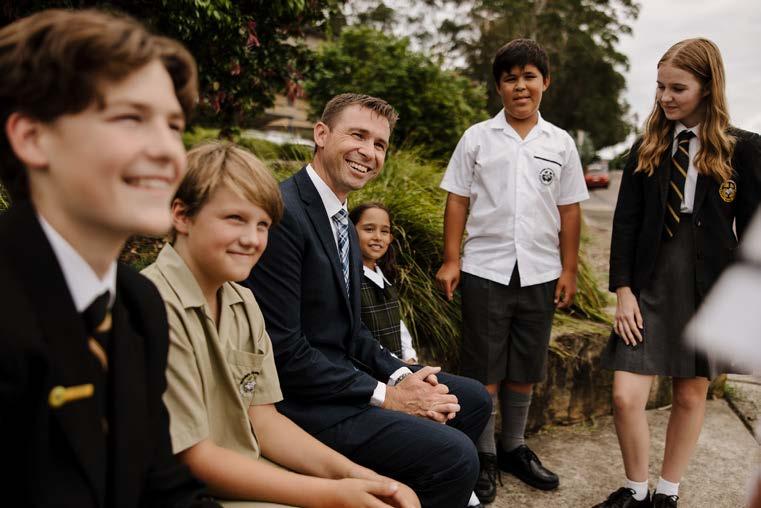
We at Orbell Family Lawyers specialise in family law. We help separating families make arrangements for their children without going to Court, ensuring they have certainty and can move on with their lives.
If you would like further information in regard to this article or your family law matter in general, please contact us. Mention this article when you call to receive a free 15–minute discovery call with one of our experienced family law solicitors.
Phone: (02) 4314 6080
info@orbellfamilylawyers.com.au orbellfamilylawyers.com.au
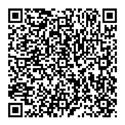
A parenting plan may be a good option for parents who are trialling a care arrangement as a parenting plan can be changed by agreeing on a further parenting plan
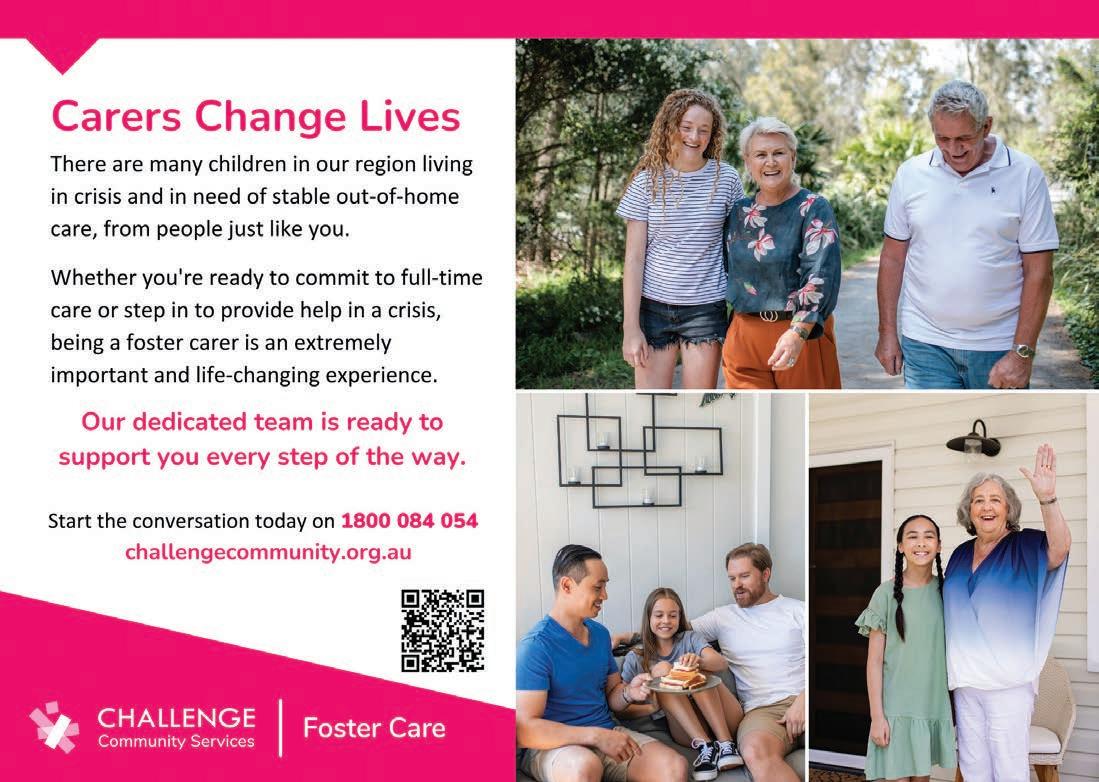
The gallbladder is a small, pear–shaped organ located in the upper right side of the abdomen, which plays a vital role in the digestive system. Its main function is to store and release bile, a digestive fluid that helps break down fats in the food we consume. Bile helps break down fats into smaller particles that can be more easily absorbed by the body. Bile is also required for the absorption of fat–soluble vitamins, such as vitamins A, D, E, and K.
In some cases, the gallbladder may need to be removed (cholecystectomy) due to inflammation, gallstones, sludge, or more rarely, gallbladder cancer. According to Melbourne Gastro Surgery, there are approximately 50,000 cholecystectomies performed in Australia per year.
After the removal of the gallbladder, people may experience changes in their digestive system, particularly in how they digest dietary fats. They may experience more bloating, indigestion/ heartburn, flatulence and diarrhoea, especially in the early stages post–surgery. We can easily survive without
a gallbladder, as it’s primarily the liver which produces bile, and the gall bladder is mostly functions as a storage pouch for it.
When the gallbladder is removed, bile produced by the liver is no longer stored in the gallbladder and it flows directly into the small intestine. This can cause digestive problems, particularly when consuming foods high in fat.
Maintaining a healthy diet is crucial after gallbladder removal to help the body adjust to the changes in digestion. Here are some tips to consider:
Gradually reintroduce fats: After surgery, it is best to start with a low–fat diet and gradually increase the intake of healthy fats over time. Good sources of healthy fats include avocados, nuts, seeds, and fatty fish such as salmon
Choose lean proteins: Focus on lean protein sources such as chicken, turkey, fish, and plant–based proteins like beans, lentils, and tofu. These proteins are easier to digest and less likely to cause digestive problems
Avoid high saturated fat foods : Fried and fatty foods are harder to digest,
and without the gallbladder, the body may struggle to process them. Avoid foods high in saturated and trans fats, such as red meat, and processed foods. Full fat dairy products may aggravate some individuals, so start with smaller portions of these. Consider white cheese such as feta or ricotta rather than the fattier, processed, yellow cheeses
Eat small, frequent meals: Consuming smaller, more frequent meals throughout the day can help ease digestion and reduce symptoms such as bloating and discomfort
Stay hydrated: Drinking plenty of water helps keep the digestive system functioning properly and prevents constipation, which can exacerbate digestive symptoms
Chew food thoroughly: The more food is chewed, the more saliva is produced, which in turn stimulates digestive enzymes and secretions further down the digestive tract. Chewing food thoroughly also helps break it down into smaller particles, making it easier for the digestive
Complete Sense is an autism counselling and consulting service where I aim to provide your family with emotional and practical support. I believe you are the expert on your child and I work with families to provide counselling for the range of emotions involved in having an Autistic family member. I can collaborate with your family in your home to provide tailored support to help with counselling, stress management, parenting skills and autism specific support such as visual aids for communication.

Contact 0466 127 763
nat@completesense.com.au
www.completesense.com.au
14 Bellbird Avenue, Terrigal, NSW 2260
system to breakdown and absorb
Digestive enzyme supplements can help support the body to break down fats and aid digestion: Ideally these supplements should be taken approximately 20mins before meals. This can be done for a couple of weeks post–surgery, then can be taken after meals for a couple of weeks, and then only taken when high fat meals or larger portions are consumed. Drinking lemon or apple cider vinegar in water can also support digestive secretions due to the bitter taste stimulating saliva
Fibre helps keep the digestive system functioning properly: By supporting healthy elimination and reducing re–absorption of toxins via sluggish digestion and a slower bowel transit time. High fibre diets may also help reduce the risk of gallstones. Good sources of fibre include fresh vegetables/fruit, whole grains,
legumes and partially hydrolysed guar gum powders (PHGG)
Avoid individual trigger/ aggravating foods: Some foods may trigger digestive symptoms more than others. Keep a food diary and note which foods seem to cause problems
Other supplements that may support good bile salt production and digestive function include probiotics which can help promote a healthy gut microbiome and herbal medicine to support optimal liver function. These should always be prescribed by a health practitioner qualified in functional nutrition and herbal medicine.
For further information or to make an appointment please visit avocanaturopath.com.au
0410 465 900
naturopathdiana@gmail.com
Diana is a university qualified naturopath and nutritionist who has over 20 years clinical experience as well as 10 years teaching nutrition at Macquarie university. Her passion is helping people create healthier, happier lives, combining the best of traditional wisdom and modern science. For more information, please visit www.avocanaturopath.com.au
Services Offered
Counselling, Emotional regulation counselling, Autism consulting - including visual support, social stories, behavioural support, autism education, emotional support, and parenting skills, Professional development for preschools, schools or other organisations that may work with Autistic individuals, Autism specific school readiness sessions and Early Intervention groups.

As the saying goes - 'you can't pour from an empty cup'. I want to help you fill your cup.

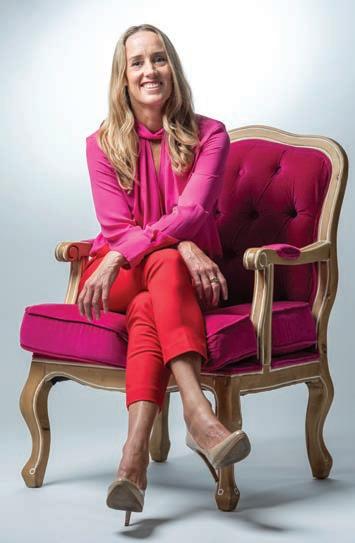
Did you know that Cancer Rehabilitation and Lymphatic Solutions clinic in Erina are the only Private clinic on the Central Coast that solely focuses on providing cancer rehabilitation and lymphoedema expert services!
Led by Cancer Rehab Occupational Therapist (OT) and Lymphoedema
Therapist and passionate trail blazer in the industry, Kate Perkins, the clinic is helping more patients across the Central Coast to recover faster, stronger, and full of energy.
Below we interview the Founder and owner Kate Perkins and gain valuable insights on how she effectively treats her patients and what revolutionary technology, equipment and approaches she and her team are utilising to gain such amazing results and why more patients, and their doctors are choosing Cancer Rehabilitation and Lymphatic Solutions and Coastal Rehab Hub as their preferred provider.
What made you go into the area of cancer rehab and Lymphoedema?
First of all, I wanted to do something meaningful in my career as an Occupational Therapist that also combined my skills I have developed over the years as a remedial massage therapist and elite athlete. After I finished my degree in OT, I extended my study in Lymphoedema Therapy at Macquarie
University in the ALERT program under the tutelage of Dr Louise Koelmeyer. An area of specialised practice that piqued my interest was the early monitoring for breast cancer related lymphoedema (BCRL), using bioimpedance spectroscopy (BIS) technology with the SOZO unit by Impedimed. Reducing the risk of men/ women developing a potentially life–long chronic condition following cancer treatment appealed to me the most, as prevention is better than cure.
This area of practice evolved for me in
the form of more study, knowledge and skill building to encompass all aspects of cancer rehabilitation. I also assess, treat, and manage other lymphoedema related presentations.
What services are you offering for cancer patients on the Coast?
Basically I treat the side effects of cancer treatment using state of the art technology using the OncoLaser™ techniques I have developed based on clinical evidence using MLS Laser, including accelerated tissue healing post–surgery, reducing symptoms of radiation scar tissue Laser Therapy reduces symptoms of chemotherapy induced peripheral neuropathy (CIPN) which is numbness/burning/tingling in hands and feet as a result of chemotherapy, reducing breast and limb lymphoedema symptoms, and softening muscle tissue.
We also provide patient education regarding cancer related fatigue, pacing, development of tailored graduated exercise rehabilitation programs with Conveniently Active’s founder and accredited exercise physiologist, Rhiannon Walton, who is also based in our Coastal Rehab Hub clinic.
We work closely with Dietitian, Nicole Saliba, founder of Eat Sense, to address individual needs throughout cancer treatment.
What are the benefits of seeing a Cancer Rehab Occupational Therapist (OT) and Lymphoedema Therapist?
As a cancer rehab and lymphoedema OT, I understand the side effects of cancer related treatments and how to minimise and manage those side effects, which leads to better recovery outcomes faster. I see people, referred by oncology specialists, at the time of diagnosis and prior to people commencing their cancer related treatments. At these times, I am able to provide education on what to expect during their treatments and what cancer rehabilitation means, as well as completing baseline lymphoedema index measurements. I find that people are far more prepared for what is ahead, and I
am that extra level of support throughout their cancer treatments. We also understand the benefits of exercise and movement during cancer treatment for better recovery outcomes, so are able to develop tailored individual graduated programs.
What is Lymphoedema?
Lymphoedema is caused by a back up of protein rich lymph fluid in a limb/
We are the only Private clinic on the Central Coast that solely focuses on providing cancer rehabilitation and lymphoedema expert services. Clinical decisions are based on current clinical evidence, extensive knowledge, and experience in this area of practice
torso/head/neck causing swelling due to damage to or blockage of the lymphatic system. There area two types of lymphoedema: Primary/Primary Lymphoedema Tada related to congenital malformation of the body’s lymphatic system. The other is Secondary Lymphoedema which develops due to trauma, surgery, removal of multiple lymph nodes, chemotherapy, and/or radiation therapy where the lymphatics are compromised reducing the transport capacity of lymph fluid throughout the body.
There are five stages of Lymphoedema:
Clinical Stage including the sub–clinical stage – early development signs/symptoms are not obvious but can be detected using BIS technology, the SOZO
Early Stage I
Stage II
Stage III
Stage IV.
How can Lymphoedema be treated/managed?
Early intervention reduces the likelihood of lymphoedema symptoms becoming a lifelong chronic condition. Symptoms can be managed by wearing a compression garment prescribed by a qualified Lymphoedema Therapist, Manual Lymphatic Drainage (MLD) massage, and exercise as the lymphatic system relies on the muscle pump movement of the body to transport lymph fluid to be processed in the body.


Why are more patients choosing to visit your clinic?
We are the only Private clinic on the Central Coast that solely focuses on providing cancer rehabilitation and


lymphoedema expert services. Clinical decisions are based on current clinical evidence, extensive knowledge, and experience in this area of practice. Our clinic prides itself in delivering professional services with compassion and use state of the art technology to achieve outstanding results.
What’s the best part of your job?
Witnessing how we change people’s lives by reducing the adverse effects of cancer related treatments and managing potential lifelong chronic conditions. I have created a warm, welcoming environment for my staff and patients, and I love going to work every day.
Do your patients need a referral?
Essentially no, patients do not need a referral. I do receive referrals from GPs, surgeons, and oncology specialists. Patients can request a referral for a GP Management Plan, otherwise known as a Chronic Disease Management Plan, under Occupational Therapy, to receive a $56 Medicare rebate per visit for 5 visits.
Are your services covered under healthcare funds?
Yes, we are covered under healthcare funds. Patients will need to confirm with their providers if they have cover.
Be sure to check out Kate Perkins dancing the salsa as an All Stars contestant of STARS of the Central Coast 2023 – dancing to raise much needed funds for Cancer Council NSW Central Coast. Find out more – https://lymphaticsolutions.com.au/ https://www.coastalrehabhub.com.au/
Leading Central Coast private practice, Cancer Rehabilitation & Lymphatic Solutions, developer of the unique OncoLaser system using MLS Laser, offer patients a premium and comprehensive allied health rehabilitation centre, providing high quality services to aid in quicker and more effective physical rehabilitation recovery from surgeries, cancer treatment, sports injuries and other conditions.

Firstly, let me commend you for your honesty and for expressing your emotions so openly. It takes a lot of courage to admit when we are struggling, especially when it comes to our relationships.
It is completely normal to feel a sense of loss or grief when welcoming a new addition to your family. Having a child can be an incredibly joyful and fulfilling experience, and it also comes with its challenges. It sounds like you are experiencing a common struggle that many parents face, which is the loss of connection with their partner.
It is important to remember that this is a temporary phase in your life. As your children grow and become more independent, you will have more time. However, as your feelings reveal, it is hard to be in it. It is hard to endure. And you cannot put a hold on your relationship until the kids grow up –that is a corrosive slow toxin that can prove fatal to relationships and become too hard to recover if resentments and hurts are left to fester.
For both of you, it is important to direct energy and focus on your relationship. One thing that I say to my couples to remember, the first–born child in your relationship, is your relationship. Our relationships are living, breathing entities that need nourishing, care, attention and play.
At a right time, it will be important for you to express your feelings to your wife. It is important however, not to direct blame, but rather own your feelings as yours, and invite her gently into understanding. It is not her job to fix them, first just understand.
Let her know how much you love and appreciate her, and how you are feeling disconnected and missing her. She may be feeling the same way and simply too tired to take it on. Be tender with each
BY SARAH TOLMIEREADER QUESTION:
“My wife is imminently due with baby number two. I love being a father. I am so excited. I love seeing my wife as a mother. She is incredible. I just miss her, and I miss us. I am angry and grieving our connection and intimacy. It is just the house, children and work. Is this what I must forever accept?”
other and allow the feelings without a ‘fix’. Once the feelings feel ‘held and expressed and witnessed, only then will you have the shared energy to come up with a plan to return attention to your relationship and make time for each other.
In the meantime, there are things you can do to maintain your connection and intimacy with your partner. Sometimes the usual things we may have reached for in our pre–kids life, like regular date nights or going away for alone time, may be impossible to achieve when you are juggling two little ones. Try to focus on the small things and give help on the household domestic tasks so you can create the ‘air pockets’ of space and time to give to each other.
One thing may be to help with the ‘witching hour’ of bath and bedtime for the children and then you take the role to make a later meal for each other to sit down together once all is done. Allow her to rest and relax and create a space for her to be the focus. Allow this to come from an intention to caretake your connection and emotional intimacy. Make no agenda for this to be about physical intimacy; you need to get heart connected first.
Habituate and build into your normal encounters and small moments a practice of loving and connection by giving extra effort to express admiration, appreciation, affection and acknowledgment. I call this your A–Game.
It is also important to take care of yourself. Make time for your wellbeing. Be careful with your thoughts – don’t be
in blame and victim mode by indulging a story that is fed by your worst thoughts, rather, give emphasis on your gratitude’s and look for the good, and be generous in ‘assuming the best; assuming the love’. By taking care of your own needs and being emotionally robust – you can come to her with a greater capacity to give and she will find it easier to lean in to you.
It is completely normal to feel a sense of loss or grief when welcoming a new addition to your family. However, keeping your relationship intimacies and connection requires attending to feelings, attending to self–care.
It is a challenging time, AND, this phase is temporary. Trust you will be able to navigate this together. Focus on what you want, on what is good and what you can be responsible for in the situation. With patience and perseverance, you both can emerge stronger and closer together.
Much love Sarah x
Sarah Tolmie – Life & Love: Sarah is a marriage therapist, life and love and relationship coach, end–of–life consultant, an independent and bespoke funeral director and holistic celebrant. She provides holistic care, mentoring, guidance, healing and transformation for individuals, couples and families at their most important times of life and love – at end–of–life, in love and relationship, and in ritual and celebration. Sarah has a series of online courses – “Creating a Miracle Marriage. Online Course for Couples” and “How do you feel? Using the intelligence of our emotions to heal and be whole in Life and Love and “Landscapes of Life and Love and Loss. Traversing the pathways of dying, death and grief”. To find out more, visit www.sarahtolmie.com.au.
Allow this to come from an intention to caretake your connection and emotional intimacy. Make no agenda for this to be about physical intimacy; you need to get heart connected first
